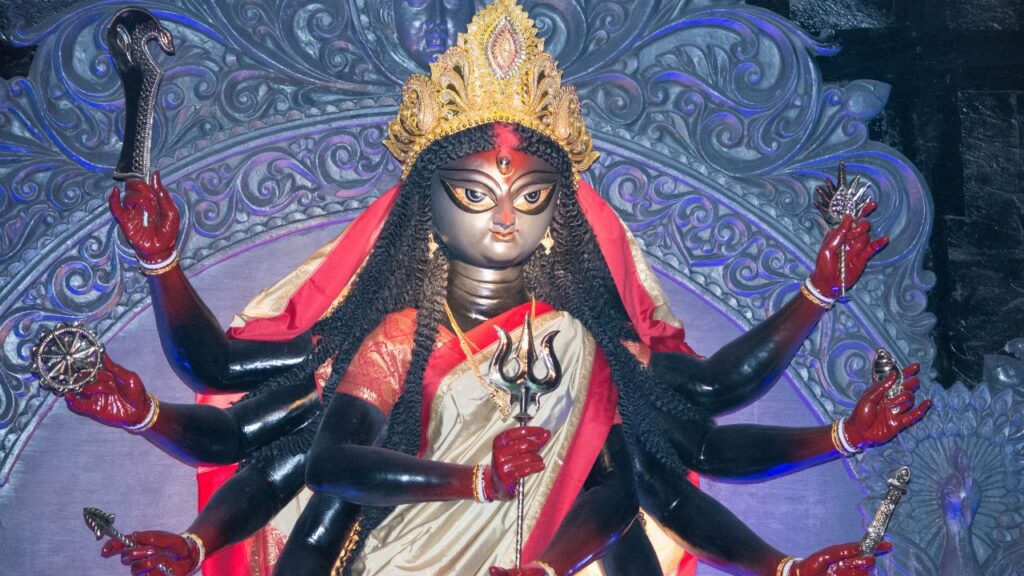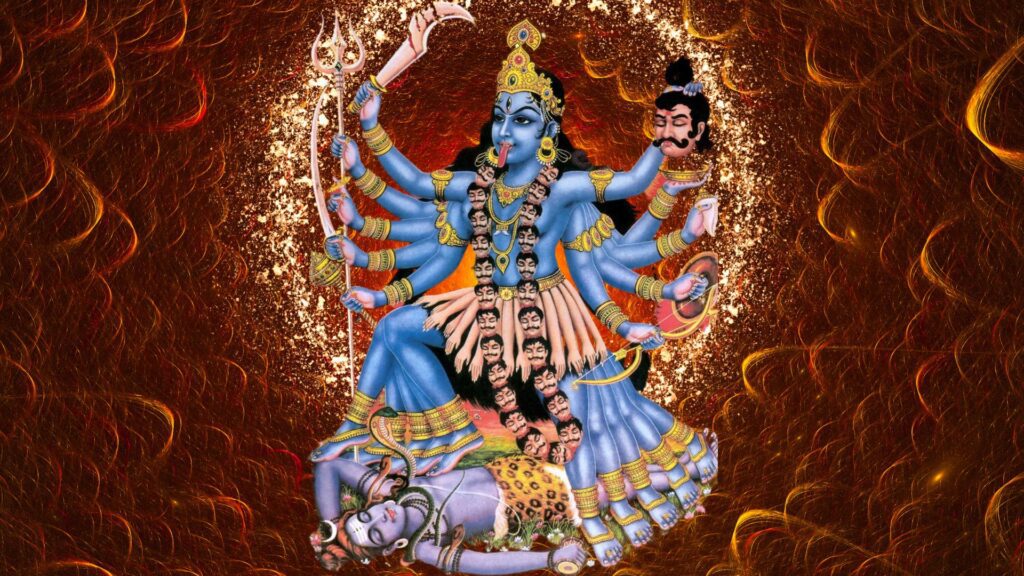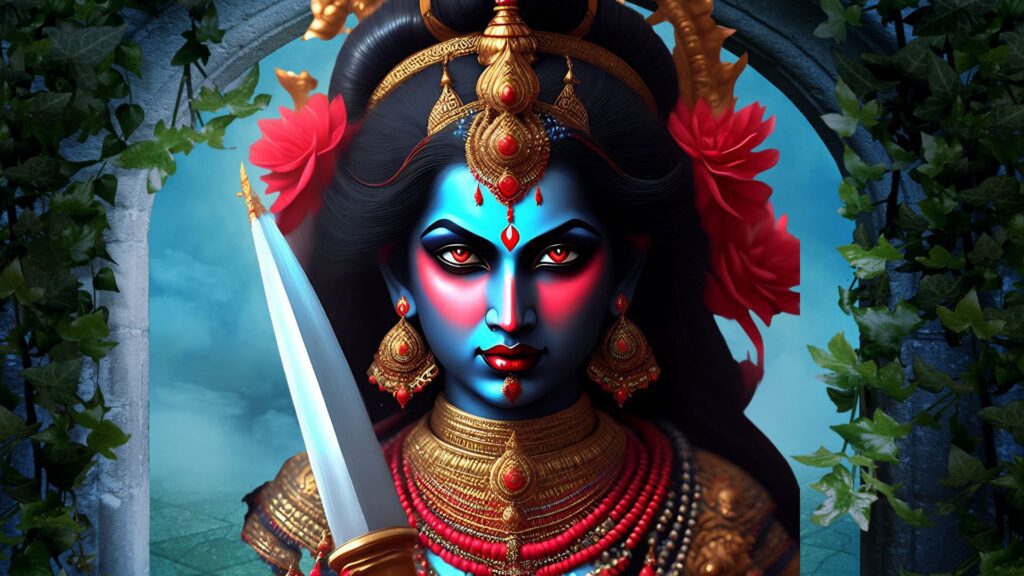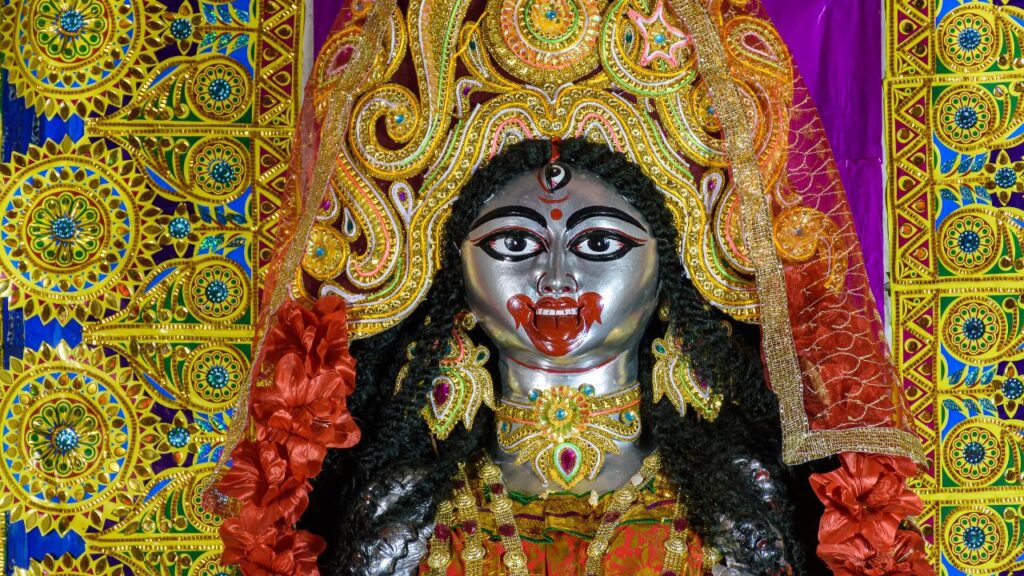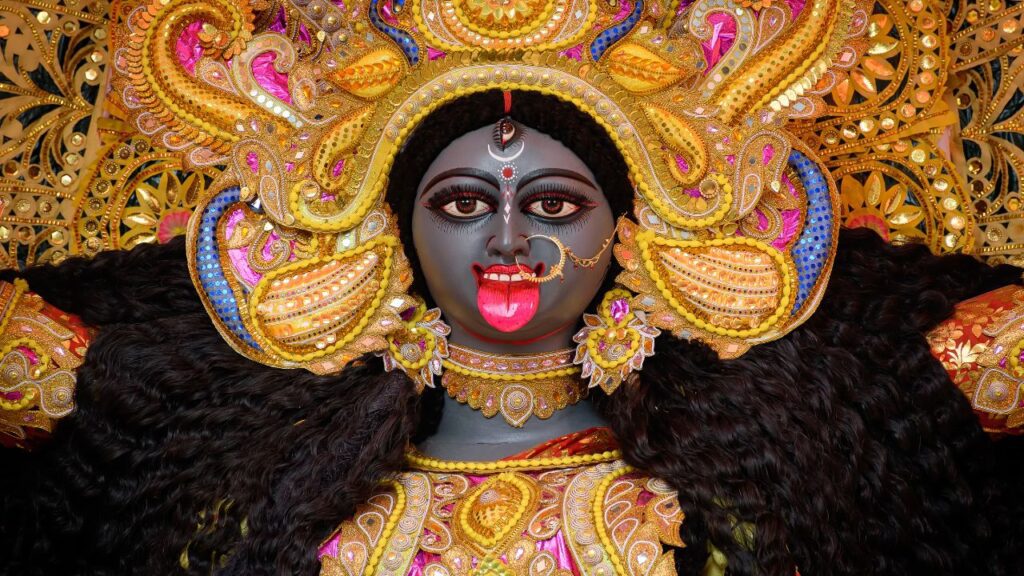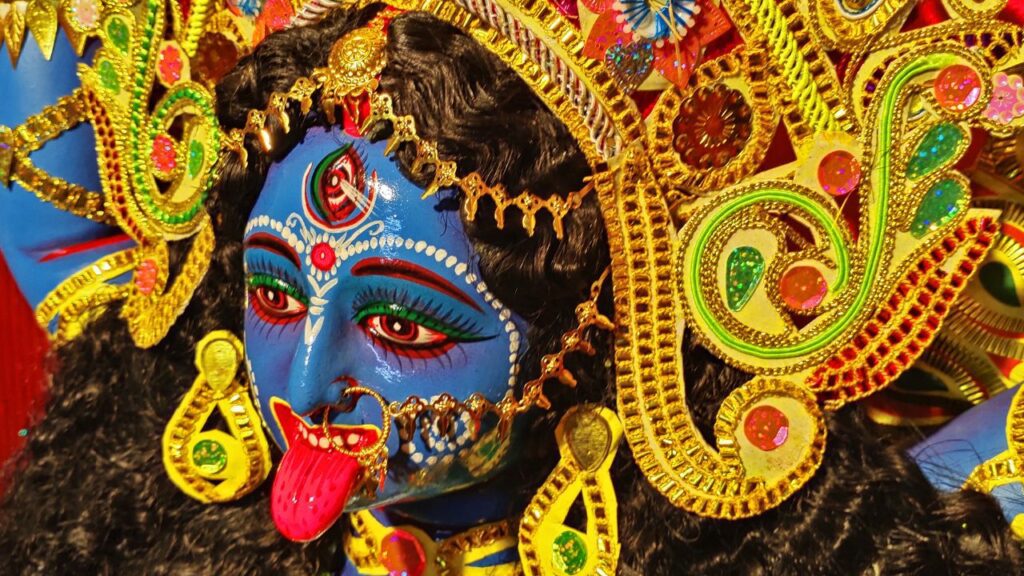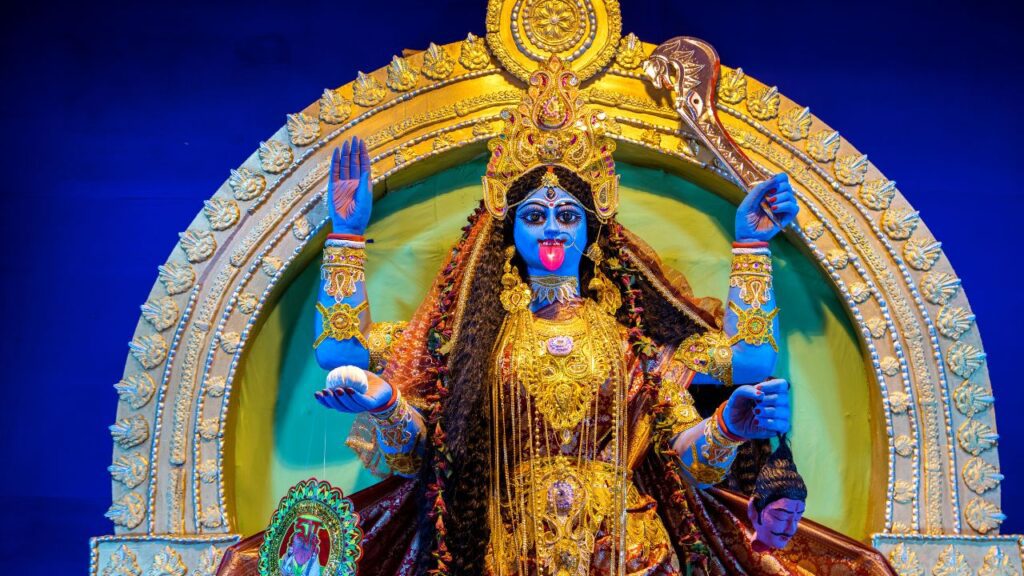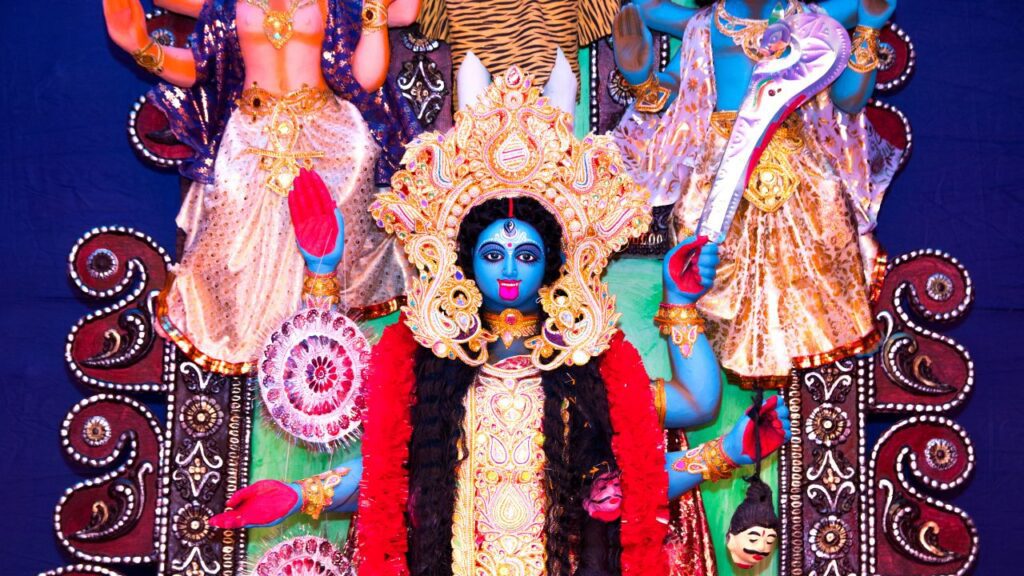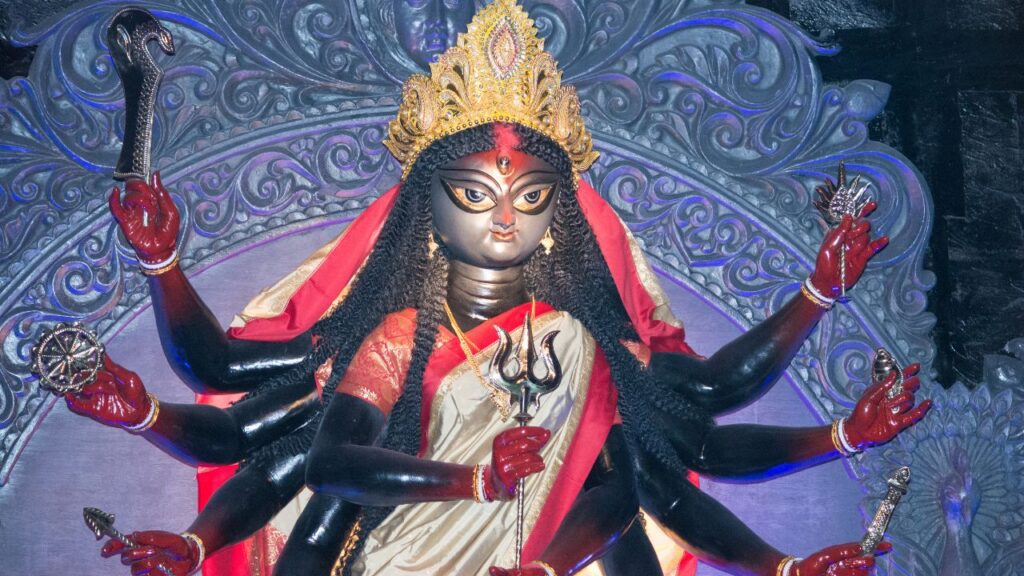Kali and Shiva: Understanding Story and Relationship
Introduction
Two of the most intriguing and mysterious characters in the complex fabric of Hindu mythology are the Goddess Kali and the Lord Shiva. Their entwined stories demonstrate the delicate balance between creation and destruction, life and death, so weaving a tapestry of great spiritual truths. Examining the underlying symbolism and lessons these two gods offer on our spiritual path, this essay explores their complex relationship.
Goddess Kali: Her Fierce Embodiment of Feminine Authority
Often shown with a dark, ferocious face, Kali, the terrifying Goddess, has wild-growing unkempt hair and an amulet of severed demon skulls hanging on her neck. Her hands represent her relentless ability to conquer evil and remove ignorance: they show a sword and a severed head. This strong artwork captures the turbulent, transforming nature of life—that required devastation that opens the path for fresh starts.
Kali is the embodiment of the sacred feminine, the powerful and loving Mother who valiantly shields her followers from injury; she is not only a figure of horror. She is invoked for bravery and protection, a reminder that the destructive powers in our life can be directed into spiritual development and rebirth.
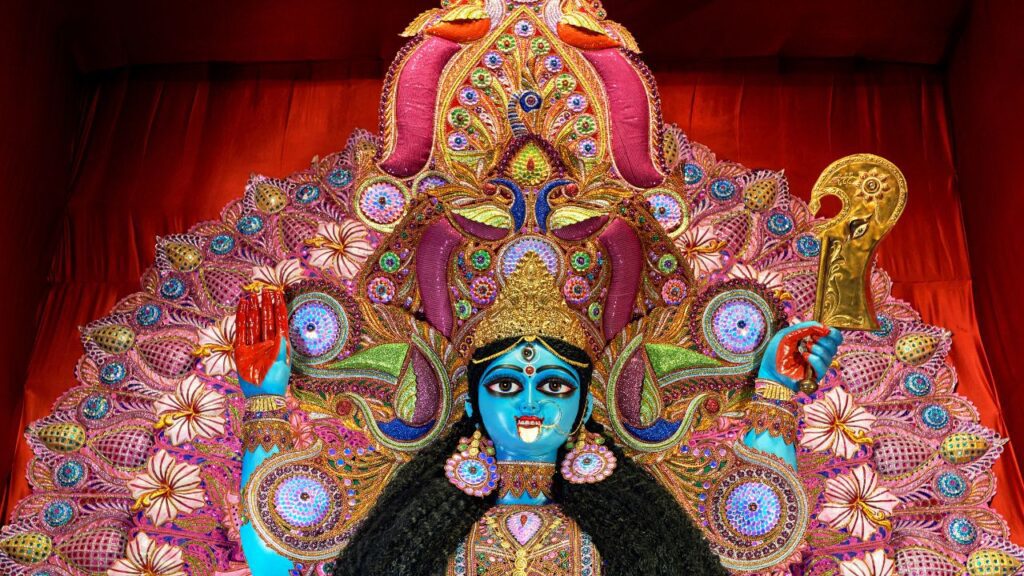
Shiva: The Supreme Transformer from Asceticism and Cosmology
Complementing the strong Kali is the mysterious Lord Shiva, the highest ascetic and the ultimate world transformer. Shiva’s ash-covered body, covered with a serpent coiled around him while he meditates in the Himalayas, represents his transcendence of the material world and his control over the cycles of creation and death.
The cosmic cycle depends critically on Shiva’s function as the transfigurer and demolisher. Emulating the idea that death is an inevitable part of the cycle of life, he dissolves the universe to open the path for its rebirth and re-creation. The Hindu view, which holds that the old must make room for the new, that change is inevitable in development and evolution reflects this idea.
Shiva’s Divine Union with Kali
Kali and Shiva have a close relationship based on great cosmic balance and divine oneness. Shiva and Kali combine into an androgynous goddess in the “half-feminine Goddess” form, with Shiva on the right and Kali on the left, therefore signifying the inescapable link between the masculine and feminine cosmic powers.
Their cosmic dance, sometimes referred to as the “Tandava,” shows still another dynamic interaction. Shiva stops Kali’s dance of destruction, therefore underscoring the fine equilibrium between life and death, creation and destruction. This marriage shows us that real balance and development depend on accepting the creative as well as the destructive elements of life.
Lessons from Kali and Shiva
For the spiritual seeker, the tales of Kali and Shiva offer great teachings. They serve as a reminder of life’s cyclical character, in which destruction is welcomed rather than feared as a means of rebirth. Their dynamic interaction helps us to perceive the possibility for transformation in even the most chaotic and destructive situations, therefore enabling us to face obstacles with bravery.
Furthermore underlined in the holy union of Kali and Shiva are the need of balance, knowledge, and connection on our spiritual path. Knowing that the dance of creation and destruction is a natural element of the cosmic fabric, it motivates us to search knowledge and develop the strength to negotiate the ebb and flow of existence.
The Symbolic Value of Kali Standing on Shiva
The picture of the Goddess standing on the chest of Shiva’s body is among the most arresting and confusing one connected with Kali and Shiva. Hindu spiritual traditions have much thought and interpretation focused on this strong symbolism.
This picture revolves on the idea of control over the life process itself. Kali’s position on Shiva’s body reflects her belief that she might both destroy and resurrect the godly. It denotes the idea that one can even “kill the Divine” and then bring life back to the cycles of existence by having such a great awareness and control over them.
This bold idea addresses the transforming power latent inside the human being. It implies that by means of tantra, one can achieve a degree of mastery over life and death, wherein the entire fabric of existence can be disassembled and rebuilt at whim. This addresses the depths of the human experience, where the mortal and the divine cross and the lines separating creation from destruction blur.
The Tantric Pathways and Mastery over Life
Furthermore closely related to the tantric practices inside Hinduism is the picture of Kali standing on Shiva’s corpse. Often misinterpreted as simple promiscuity, these esoteric techniques are really derived from the quest of great discipline and the control over the human system.
Tantric rites—such as the decapitation and reattachment of one’s own head—symetically depict the ability to destroy life and then reassemble it. These techniques are evidence of the practitioner’s great awareness of the nature of life and the ability to shape the very fabric of reality, not only of showmanship skills.
By means of these tantric techniques, the skilled tries to surpass the constraints of the mortal coil, therefore attaining an amazing and profoundly transforming degree of mastery over life and death. It is a path of self-discovery and the revelation of the infinite possibilities inside the human being.
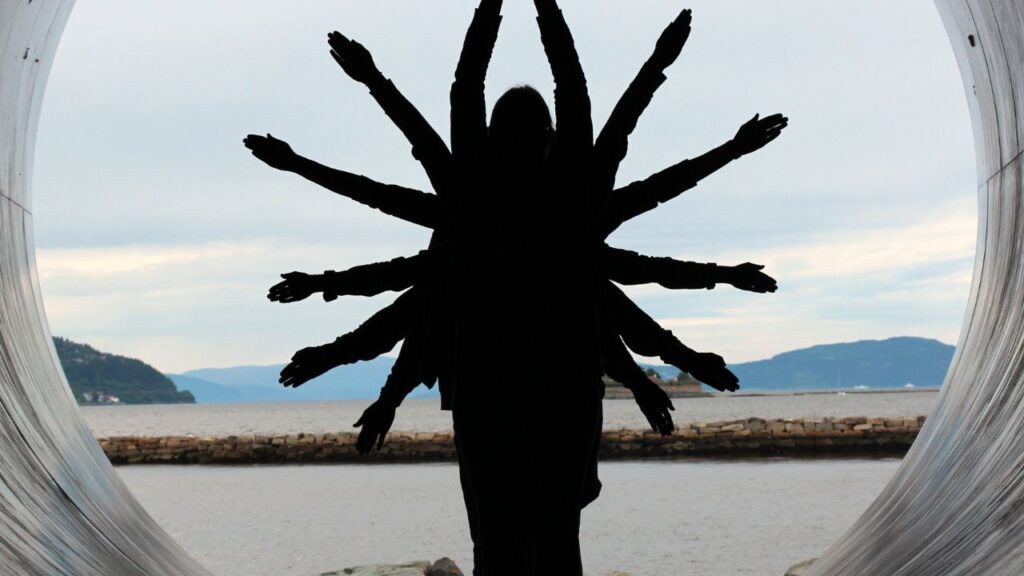
Creation and Destruction’s Cosmic Dance
Underlying the cosmic order, Kali and Shiva—the Goddess of destruction and the Lord of transformation—have their interaction to symbolize the continuous dance of creation and destruction. This dance is a harmonic and required cycle that maintains the equilibrium of the universe, not one of anarchy and conflict.
The dance of Kali and Shiva reminds us that destruction is a necessary component of the creative process, just as the seasons shift and the old gives place to the new. This is the required pruning that lets the old shed to create room for the fresh development.
Accepting this cosmic dance helps us to release our attachments and worries, welcome the transforming power of change, and believe in the natural wisdom of the cosmos. This dance helps us to learn the art of surrender, the grace of acceptance, and the beauty hidden among even the most turbulent of times.
Uniting Masculine and Feminine: the Androgynous Form
A potent emblem of the marriage between the masculine and feminine ideas of the divine, the combining of Kali and Shiva into the “half-feminine Goddess” form This androgynous god stands for the belief that the harmonic blending of the masculine and feminine forces embraces the ultimate reality outside of gender.
In this shape, Kali’s left side and Shiva’s right side join to represent the inseparable link between the creative and destructive energies of the universe. It reminds us that only when we acknowledge and respect the underlying duality within the cosmos and ourselves will we be able to attain actual balance and wholeness.
Thinking about this divine union invites us to investigate the ways in which we could foster a closer awareness and respect of the interactions between the masculine and feminine sides of our own life. It’s a road toward more self-awareness, empowerment, and the revelation of our own divine ability.
Value of Harmony and Connection
Eventually, the tales of Kali and Shiva help us to see the need of connection, knowledge, and balance on our spiritual path. They remind us that although the cycle of creation and destruction is a natural feature of the cosmic order and that genuine wisdom is our capacity to welcome both sides with bravery and peace.
Understanding the dynamic interaction between Kali and Shiva helps us to face the difficulties and changes of life with more resilience and sense of direction. We know that destruction is to be considered as a chance for rebirth and expansion rather than as something to be dreaded.
Furthermore, the divine marriage of these two gods highlights the great need of harmony and connection for our spiritual growth. It motivates us to pursue knowledge, develop inner strength, and create a closer awareness of the connectivity of all things. By doing this, we can gracefully, courageously, and more clearly negotiate the tides of life.
Kal’s and Shiva’s Timeless Wisdom
For millennia, the tales and symbols connected with Kali and Shiva have survived, their ageless wisdom appealing to spiritual searchers of many generations. These gods provide us a prism through which to see the complexity of life, death, and the perpetual dance of creation and destruction, therefore reflecting the great facts of the human experience.
Examining the secrets of Kali and Shiva invites us to start a transforming path of self-discovery whereby the lines separating the divine from the mortal blur and the fundamental nature of life is exposed in all its amazing intricacy.
We might find ourselves pulled ever further into the heart of the cosmic tapestry, where the dance of Kali and Shiva continues to reveal the secrets of the universe and the infinite potential that lies inside each of us as we explore and consider the lessons of these great people.
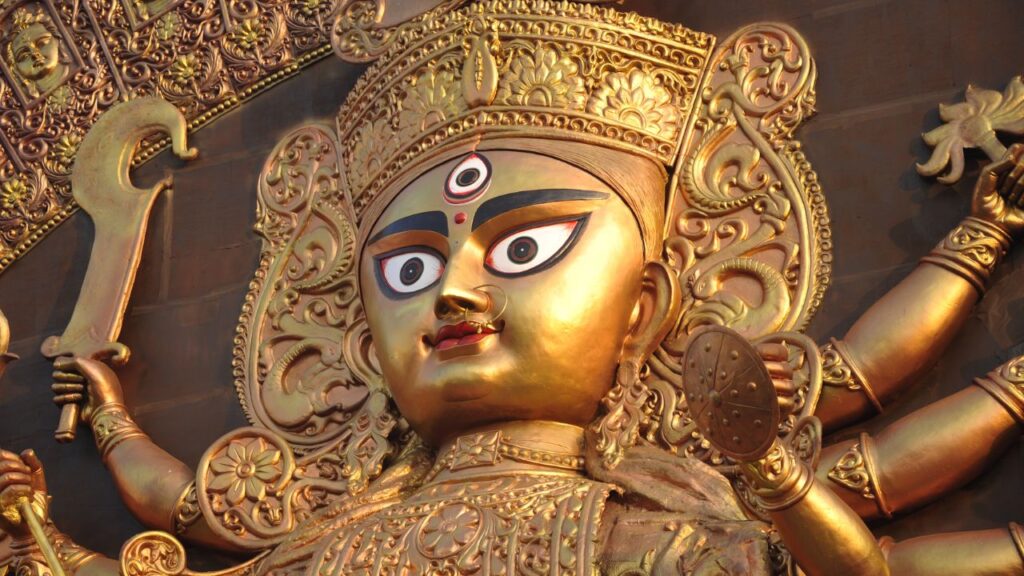
Conclusion
The entwined stories of Kali and Shiva provide a deep and multifarious examination of the human experience. We are asked to face the reality of creation and destruction, life and death, and to accept the cyclical nature of life with courage, knowledge, and a strong sense of connectedness by their dynamic interaction.
Examining the secrets of these legendary people helps us to develop a better awareness of the balance, change, and divine potential everyone carries. The legends of Kali and Shiva act as a timeless reminder that the dance of the cosmos is a dance of togetherness, where the masculine and feminine, the divine and the mortal, unite in a harmonic and required embrace.
As we consider the lessons of Kali and Shiva, may we find the strength to negotiate the ebbs and flows of our own life with grace, the wisdom to see destruction as a road to renewal, and the courage to welcome the cosmic dance of creation and destruction that lies at the heart of the universe.
#kali #shiva #stepon #shiv
